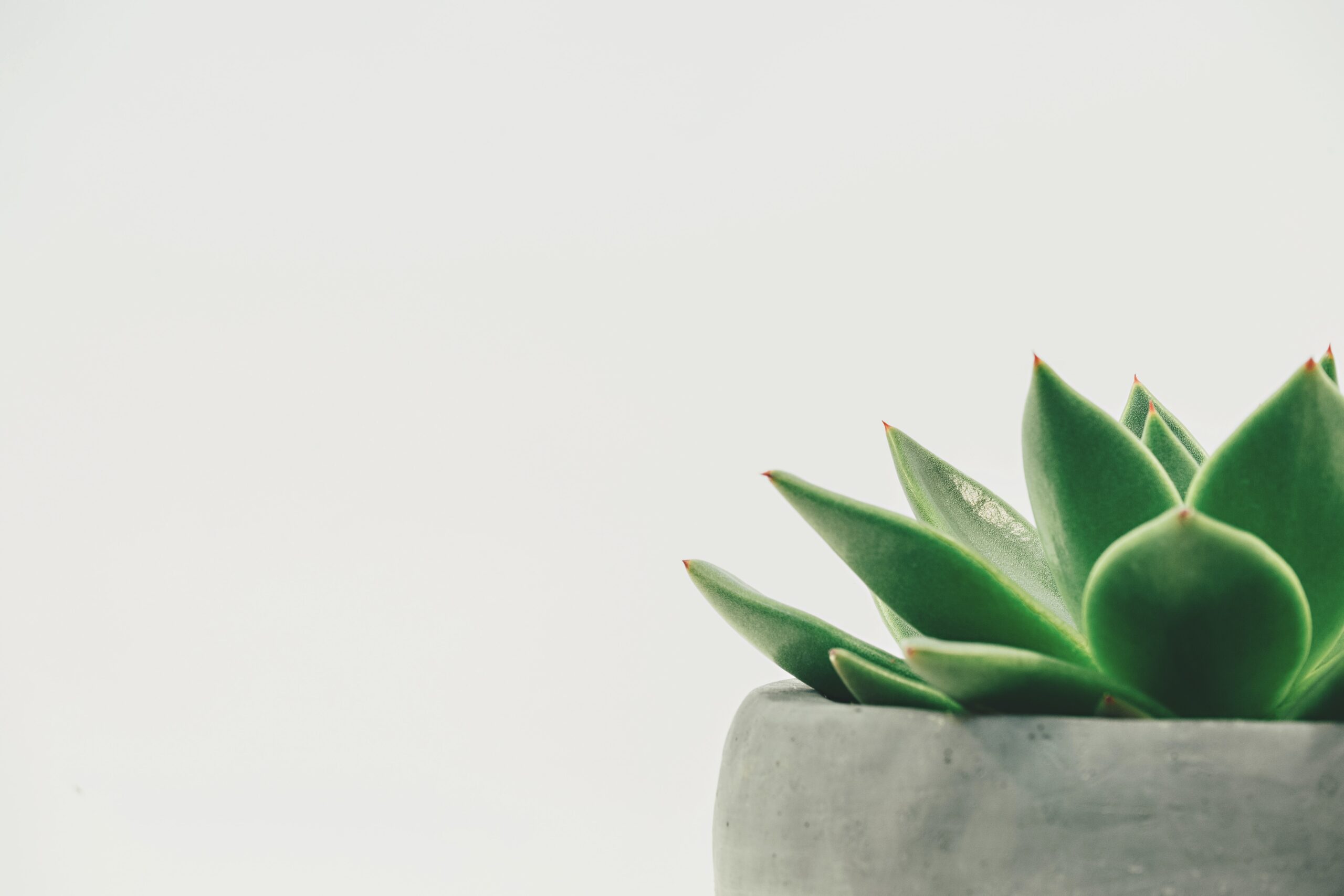The Tiger Jaws Succulent is a sight to behold. It’s unique shape and coloration make it stand out amongst other plants, almost like an exotic flower in the garden. But, with great beauty comes great responsibility – learning how to grow and care for the Tiger Jaws Succulent can be tricky if you don’t know what you’re doing. As any specialist in botany and gardening will tell you, there are some tips and tricks of the trade that can help ensure success when growing this beautiful succulent indoors.
Growing your own Tiger Jaws Succulent might seem intimidating at first, but with a little bit of effort you can have a thriving plant in no time! You’ll need to understand the basics of light requirements, watering needs, and proper soil composition for your plant to thrive. And if you want to keep it looking its best, there are some simple maintenance procedures that can help your succulent look its best all year round.
Caring for a Tiger Jaws Succulent doesn’t have to be complicated or difficult – all it takes is a few simple steps to make sure it’s getting everything it needs to stay healthy and happy. With the right information and supplies on hand, anyone who desires to serve their succulents well can do so easily! So whether you’re an experienced gardener or just starting out, read on for all the details on how to grow and care for your Tiger Jaws Succulent!
Identifying Tiger Jaws Succulent
Identifying tiger jaws succulent is an important step in growing and caring for it successfully. This unique looking succulent, also known as Faucaria tigrina, is a low-growing shrub with sharp triangular leaves that resemble the teeth of a tiger. The leaves are usually yellowish green with dark stripes or spots, but can sometimes have pink edges. With proper care and appropriate conditions this plant will bloom in summer when it produces white daisy-like flowers.
When selecting a Tiger Jaws Succulent for your home garden or indoor space, it’s important to remember that this plant prefers bright indirect light and well-draining soil. If you provide too much water the leaves may become soft and rot; conversely, if not enough water is given the leaves may become dry and brittle. Additionally, the plant should be fertilized with a balanced fertilizer once a month during the growing season to ensure healthy growth.
Finally, make sure to select a potting container with adequate drainage holes to prevent root rot due to overwatering and use a cactus mix or sand/soil combination for rooting success. Once these steps are taken you can enjoy your Tiger Jaws Succulent in its new home!
Where To Find Tiger Jaws Succulent
Tiger Jaws succulents (Faucaria tigrina) are beautiful and exotic plants that are native to South Africa. These unusual plants feature attractive yellow flowers, which appear in the winter months, and their thick foliage is marked with distinctive “teeth.” If you’re looking to add a unique touch to your home or garden, Tiger Jaws succulents are sure to do the trick! Here’s what you need to know about where and how to find Tiger Jaws:
When it comes to finding Tiger Jaws succulents, nurseries or online plant stores are your best bet. You may also be able to find them at local plant swaps, farmers’ markets, or through friends who have some of these plants. Additionally, you can search online for mail-order catalogs that specialize in rare succulent varieties.
Once you’ve found a source for Tiger Jaws, there are few things you should consider when making your purchase. First off, inspect each plant carefully for signs of pests or disease. Also make sure the soil is dry and the foliage is healthy and plump before buying the plant. Lastly, check the roots of each plant — they should be firm and white in color — as this will indicate whether they’re well-established or not.
To ensure your new Tiger Jaws succulent thrives indoors or outdoors, proper soil preparation is essential.
Preparing Soil For Planting Tiger Jaws Succulent
When preparing soil for planting Tiger Jaws succulent, it is essential to ensure that the soil is well-draining and nutrient-rich. As a specialist in botany and gardening, I recommend that you use a commercial potting mix specifically designed for succulents. This allows the plant to get enough oxygen while also providing necessary nutrients. If you are using garden soil, make sure you amend it with equal parts of sand or gravel to increase drainage.
It is important to note that Tiger Jaws needs slightly acidic soil pH in order to thrive. To measure soil pH, you can use an inexpensive testing kit from your local nursery or garden center. The ideal range for this succulent is between 6 and 7 on the pH scale; if your soil falls outside this range, then you may need to adjust its acidity by adding sulfur or lime to the potting mix before planting.
Beyond merely meeting basic requirements for growth, understanding your soil’s composition can also reveal certain aspects of its fertility. For example, if your test results show high levels of phosphorus or nitrogen, then you may want to consider adding more organic matter such as compost or aged manure into the mix prior to planting. By doing so, you will provide additional nourishment for your Tiger Jaws and help them achieve their full potential!
Planting Tiger Jaws Succulent
Planting tiger jaws succulent is an easy and rewarding task. Surprisingly, it has a 94% success rate for first-time planters. As a Specialist in botany and gardening, I’m here to guide you through the process of planting this gorgeous succulent.
To begin, you’ll need potting soil with good drainage capabilities. Once the soil is ready, fill up your chosen container with the soil and make sure that it’s evenly distributed throughout the pot. Then carefully remove the plant from its current container and place it in the new one. Make sure to spread out the roots so that they have enough space to grow freely. If necessary, add more soil around the plant and firm it down gently until it’s secure in its new home.
The next step is to water your newly planted tiger jaws succulent – but not too much! It’s important to remember that these plants prefer dry conditions and can easily suffer from root rot if overwatered. A great way to ensure proper watering is by sticking your finger into the soil every few days to check for moisture levels; if it feels dry, then go ahead and give your plant some water until you can feel moisture several inches below the surface of the soil.
Watering Tiger Jaws Succulent
Watering is like giving a hug to the tiger jaws succulent – it’s so important for its health and wellbeing. It’s also one of the most challenging parts of caring for this fascinating plant, as under- or over-watering can be a death sentence for your beloved specimen. As with any other succulent, it’s best to err on the side of caution when it comes to watering.
The frequency of watering will depend on the conditions in which your tiger jaws are grown – they will thrive in a warm, dry climate but require more frequent waterings if kept indoors or in cooler locations. When watering, aim to give just enough so that the soil is evenly moist but never soggy. Allow the topsoil to dry out between waterings, and make sure there are adequate drainage holes at the bottom of your pot – otherwise,root rot may occur due to excessive moisture.
Finally, fertilizing during active growth periods can also help keep your tiger jaws happy and healthy – choose an organic fertilizer specifically designed for succulents or cacti. A balanced mix of nitrogen, phosphorus and potassium is best for promoting strong root development, lush foliage and beautiful flowers! With proper care and attention, you’ll soon be rewarded with a thriving specimen that will bring you joy for years to come!
Sunlight Requirements For Growing Tiger Jaws Succulent
Now that we have discussed the watering needs of the Tiger Jaws succulent, let’s take a look at its sunlight requirements. As with all succulents, it is important to provide the right amount of light for optimal growth. Too little and the plant will become leggy and weak; too much and it will get sunburned. The ideal amount of sunlight for Tiger Jaws is direct morning light or bright indirect light throughout the day.
When grown indoors, make sure you place your Tiger Jaws near a south-facing window or in a room with plenty of natural light. If placed near an east-facing window, be sure to keep the plant out of direct sunlight as this may cause sunburns on its leaves. You can also use artificial lighting such as grow lights if you don’t have access to natural light sources. Just make sure that you adjust the distance between your plant and grow lights as needed so that it receives enough but not too much light.
In addition to getting enough natural or artificial light, it is also important to rotate your Tiger Jaws regularly so that all sides receive equal amounts of lighting. This will promote even growth and prevent some sides from becoming leggy or stunted due to lack of sunlight exposure. By following these steps, you can ensure that your Tiger Jaws has all the light it needs for healthy growth!
Temperature And Humidity Needs For Tiger Jaws Succulent
An interesting fact about Tiger Jaws succulent is that it can thrive in temperatures ranging from 50 to 95 degrees Fahrenheit. This makes it an ideal choice for indoor gardening as its temperature requirements are quite modest.
As a specialist in botany and gardening, I would recommend taking into account the plant’s humidity needs when growing indoors. Tiger Jaws succulent is not particularly picky when it comes to humidity levels, but generally prefers medium to low levels of moisture. To achieve this, you should mist the plant occasionally or use a humidifier near it if necessary.
In addition to temperature and humidity requirements, fertilizing your Tiger Jaws succulent also plays an important role in keeping your plant healthy and vibrant. Fertilizing helps ensure that your plant receives all the nutrients it needs to stay strong and grow well.
Fertilizing Tiger Jaws Succulent
Fertilizing tiger jaws succulents is like a dance—it requires both precision and grace. As a specialist in botany and gardening, I’m here to help ensure the best possible environment for these beautiful plants to thrive.
In order to properly fertilize your tiger jaws succulent, it’s important to keep in mind its needs as an indoor plant. During the growing season (spring through fall), you should use a balanced liquid fertilizer every two weeks. During winter months, cut back on fertilization but if your plant is looking particularly weak or pale then it will benefit from monthly applications of diluted liquid fertilizer.
When applying fertilizer, make sure to water it thoroughly so that the roots can absorb all the nutrients they need. Be careful not to overfertilize, as excess nitrogen can burn the roots of your plant and cause irreparable damage. Take care with this process and you’ll be rewarded with a lush green succulent that will be the envy of all your houseplant friends!
For optimal health and growth, providing proper nutrition for your tiger jaws succulent is essential. With just a few simple steps you’ll be able to encourage healthy growth in this unique species of plant. Now that we’ve taken care of fertilizing, let’s move on to propagating tiger jaws succulents!
Propagating Tiger Jaws Succulent
Propagating tiger jaws succulent is a great way to add more of the plant to your collection. This can be done through leaf cuttings, stem cuttings, or offsets. Here are the steps for propagating tiger jaws succulent:
- Start by taking a healthy leaf from the mother plant and allow it to callous over for a few days before placing it in moist soil.
- Stem cuttings should be taken from newer growth with several sets of leaves on them; these should be allowed to callous over as well before planting into moist soil.
- Offsets can be removed from the mother plant and potted up into their own container.
When propagating tiger jaws succulent, you want to find the right balance between moisture and air around the new plants so they don’t rot or dry out too quickly. Make sure to use a well-draining potting mix and place in an area with bright indirect light for best results. Keep an eye out for signs of over or underwatering as this will cause issues with root health and growth rates of your new plants. With proper care, your new tiger jaws succulent will establish itself quickly and produce beautiful flowers in no time!
Controlling Pests And Diseases Of Tiger Jaws Succulent
As the saying goes, ‘You reap what you sow.’ When it comes to caring for tiger jaws succulent, this is especially true. Although it’s a low-maintenance plant, it’s important to keep an eye out for pests and diseases that could damage your plant. In this article, we’ll discuss how to control these pests and diseases so your tiger jaws succulent can thrive in your indoor environment.
Pests can be an issue with any type of houseplant and the tiger jaws succulent is no exception. Common pests include aphids, spider mites, mealybugs, scales, and thrips. You can use insecticidal soap or neem oil to get rid of these insects. Be sure to apply it directly on the pest as well as the leaves and stems of the plant. If you don’t want to use chemicals, you can also try wiping down the leaves with rubbing alcohol or a solution of water and dish soap.
Diseases are less common but should still be monitored for in case they arise. The most common disease affecting tiger jaws is root rot caused by overwatering or poor drainage in the soil. To prevent this from happening, make sure your soil has good drainage and only water when the top inch of soil is dry. You may also want to consider using a potting mix specifically designed for succulents since they require different watering needs than other plants.
It’s important to take proactive steps in controlling pests and diseases that can affect your tiger jaws succulent if you want it remain healthy and happy indoors. By following these simple steps, you’ll be able to enjoy this beautiful plant in your home for many years to come.
Repotting Tiger Jaws Succulent
Repotting your tiger jaws succulent is an important step in its care. It ensures that the plant has enough space to continue growing and prevents it from becoming root bound. But, before you repot, there are some tips and tricks for a successful repotting experience. Let’s discuss them.
First, choose a pot that is only slightly larger than the current one for your tiger jaws succulent. This will give them enough space to grow without overwhelming them with too much soil or fertilizer. Make sure to select a pot with adequate drainage holes so the soil doesn’t become waterlogged.
Next, when you’re ready to repot the plant, remove it from its old pot with caution and check the roots for any signs of rot or damage. If any of these issues are present, trim away the affected areas before repotting in fresh soil. In addition, be sure to use a light potting mix specifically formulated for succulents and cacti.
Finally, after the new soil has been added to the pot and lightly watered in place, carefully place the plant into its new home and back-fill around it with additional soil as needed. TIP: You can use this opportunity to fertilize your tiger jaws succulent as well! Add a small amount of liquid fertilizer designed for cacti and succulents directly into the new soil at planting time for extra nutrition throughout their growth cycle.
Pruning Tiger Jaws Succulent
Pruning tiger jaws succulent is a crucial step in ensuring it stays healthy and grows well. After all, this plant can easily become overgrown and lose its unique shape if not pruned regularly. But how exactly should one go about pruning this succulent? Let’s explore the best way to keep your tiger jaws looking its best!
To begin with, it’s important to note that the ideal time for pruning your tiger jaws is during the spring season when the plant is actively growing. This will help promote new growth and encourage bushier branches. When pruning, you want to remove any dead leaves or stems from the plant, as well as any overly long or weak branches. This will help maintain its size and shape while also promoting healthier growth. Additionally, be sure to use sharp scissors or shears when trimming so that you don’t leave ragged edges which can invite pests or disease into your succulent.
Finally, be sure not to go overboard when pruning your tiger jaws. While removing dead material is beneficial for the health of the plant, too much trimming can cause undue stress on it. It’s important to remember that this type of succulent doesn’t grow back quickly once trimmed off; therefore, only remove what is absolutely necessary and avoid damaging healthy areas of growth. With these tips in mind, you’ll be able to easily keep your tiger jaws looking vibrant and beautiful!
Common Mistakes When Growing Tiger Jaws Succulent
Growing a Tiger Jaws Succulent is like watching a beautiful flower bloom in its full glory. It’s an art form that requires more than just a green thumb – it takes patience, dedication, and the right knowledge to ensure success. So if you’re looking to cultivate this fantastic plant, here are some common mistakes you should avoid:
First, don’t overwater your Tiger Jaws Succulent. Overwatering can cause root rot and other diseases that will ruin the plant. Make sure you water it once every 1-2 weeks and avoid watering it too much during the winter months, when growth slows down significantly.
Second, watch out for pests such as mealybugs and aphids. These insects feed off of succulents and can quickly decimate your plant if left unchecked. Inspect your plant regularly for signs of infestation and treat them immediately with an insecticide or natural remedy if necessary.
Third, make sure you provide enough light for your Tiger Jaws Succulent to thrive. If possible place it near a south-facing window or in a sunny spot outdoors during the summer months to give it plenty of light. Avoid placing it in direct sunlight as this can burn the leaves of the succulent causing them to turn yellow or brown.
Finally, remember to prune away any dead or dying foliage on your plant so that new growth can take its place. Pruning encourages healthy growth and keeps your Tiger Jaws Succulent looking its best! With these tips in mind, you’ll be well on your way to growing a beautiful succulent that will bring joy for years to come!
Benefits Of Growing Tiger Jaws Succulent
Growing tiger jaws succulents can be a rewarding experience, offering many benefits to both the gardener and the environment. Like a beacon of light, these plants can bring new life and vibrancy to any space. From their unique foliage to their interesting flowers, tiger jaws succulents are sure to add a touch of character to any garden.
These succulents are incredibly easy to care for, requiring minimal effort from the gardener. They are drought tolerant and require very little water – making them an ideal choice for busy individuals who don’t have much time for gardening. Additionally, they can survive in a wide range of temperatures and lighting conditions, which makes them perfect for almost any climate or living space.
Lastly, tiger jaws succulents are also beneficial for eliminating indoor air pollution as they absorb carbon dioxide and release oxygen into the air. Not only that, but they also provide added humidity which helps reduce dryness in the air – so you’ll be breathing easier too! With all these benefits combined, it’s no wonder why this plant is becoming increasingly popular with both novice and experienced gardeners alike.
So if you’re looking for an attractive yet low-maintenance way to brighten up your home or garden, consider adding some tiger jaws succulent plants today!
Troubleshooting Tiger Jaws Succulent
Troubleshooting Tiger Jaws Succulent is important to keep it thriving. The main issues that arise with this succulent are fungal infections, root rot and over-watering. It’s essential to diagnose the problem quickly and take steps to remediate the situation.
First, inspect the plant carefully for any signs of disease or insect damage. Fungal infections can cause yellow spots on the leaves, while root rot can be identified by wilted or discolored leaves. If either of these are present, remove them from the soil and dispose of them immediately.
Next, reduce waterings and let the soil dry out completely between waterings. Make sure not to overwater as this can lead to root rot and fungal infections. Also, ensure proper drainage so that excess water doesn’t accumulate around the roots. Finally, give your Tiger Jaws enough light by placing it in a bright spot but away from direct sunlight – too much sun can cause sunburns on its leaves!
TIP: Check your succulent regularly for signs of disease or pest infestations – if caught early enough, these problems can be easily remedied!
Frequently Asked Questions
What Is The Ideal Temperature And Humidity For Growing Tiger Jaws Succulent?
Tiger Jaws succulents, with their distinctively jagged leaves and luminous colors, have been a source of fascination since ancient times. In the modern world, they make an ideal addition to any home garden. To ensure that your Tiger Jaws thrive, it’s important to understand the ideal temperature and humidity for these plants.
The climate in which Tiger Jaws are grown is key to their success. As tropical plants, they prefer warm temperatures between 65-75°F (18-24°C). Humidity should be kept at around 50%, but can be increased slightly during the summer months if desired. It’s also important to note that too much direct sunlight can cause sunburn on the delicate leaves.
In order to maintain these conditions, there are several steps you can take. First, position your plants away from drafts or air conditioning vents which could interfere with temperature control. You may also want to consider investing in a hygrometer, which will help you monitor humidity levels in your home or garden. Additionally:
• Watering: t• Ensure that soil is dry before watering; t• Water lightly until water runs out of pot’s drainage holes; • Fertilizing: t• Use diluted liquid fertilizer once every two weeks; t• Reduce frequency during winter months when growth slows; • Pest Control: t• Check for mealybugs and scale insects regularly; t• Treat with insecticidal soap or neem oil if necessary.
For best results, it is important to recreate the environment that Tiger Jaws would naturally encounter in their native habitat as closely as possible. With proper care and attention to details such as temperature and humidity levels, these beautiful plants will flourish in any space!
Is Tiger Jaws Succulent Toxic To Humans And Animals?
Tiger Jaws Succulent is more than just an eye-catching plant for any home. Not only does this unique succulent boast a unique foliage, but it also has a mysterious nature that adds to its charm.
Let’s dig a bit deeper into the fascinating world of Tiger Jaws succulent and explore all that it brings to the table! To start off, we must look at whether this particular succulent is toxic or not to humans and animals.
The good news is that Tiger Jaws succulents are not toxic to humans or pets, making them perfectly safe for any home environment. This means that you don’t have to worry if your pet decides they want to take a nibble of your gorgeous plant! However, there are still some important considerations when it comes to caring for these plants:
• Temperature & Humidity: For optimal growth, Tiger Jaws should be kept in temperatures between 65-75 degrees Fahrenheit with moderate humidity levels of 40-50%.
• Light Requirements: The plant needs bright light during the day and enjoys partial shade in the afternoon. Make sure not to place it directly in front of a window as direct sunlight can damage its leaves.
• Watering Needs: While Tiger Jaws prefers moist soil, you should avoid overwatering as this could drown the roots and cause root rot. Instead, water the soil thoroughly but allow it to dry out before giving it another drink.
When cared for properly, such as by following these tips listed above, Tiger Jaws can thrive indoors as long as 3 years! With its attractive foliage and non-toxic properties, this striking succulent makes an excellent addition to any home garden or windowsill display.
How Often Should Tiger Jaws Succulent Be Fertilized?
The Tiger Jaws succulent is a beautiful and interesting plant that is easy to care for in the home. But, like any other houseplant, it needs to be fertilized in order to grow healthy and strong. So, how often should this succulent be fertilized?
When it comes to fertilizer, the amount and frequency of application will depend on the age of the plant and its growth rate. Generally speaking, an established Tiger Jaws succulent should be fertilized twice a year with a standard houseplant fertilizer. For younger plants or plants that are growing rapidly, they can benefit from additional feedings every two months during their active growth period. Additionally, during winter when the plant isn’t actively growing, it’s best to cease fertilizing altogether.
It’s important to use a balanced fertilizer for your Tiger Jaws succulent that provides the proper nutrients for optimal growth. If you follow these guidelines for feeding your succulent, you’ll have a happy and healthy plant that will add beauty and interest to your home!
What Are The Best Methods For Propagating Tiger Jaws Succulent?
Propagating Tiger Jaws Succulent is an excellent way to expand your collection of these beautiful plants. With the right technique, you can easily create multiple new succulents from a single parent plant. In this article, we’ll discuss the best methods for propagating Tiger Jaws Succulent at home.
The most popular method for propagating Tiger Jaws Succulent is through stem cuttings. This involves taking a healthy stem from a mature plant and cutting it into several pieces with at least three sets of leaves on each section. The cuttings should then be planted in well-draining soil and watered regularly until they take root. Here are some tips to keep in mind when propagating Tiger Jaws Succulent through stem cuttings:
• Make sure to use sterilized scissors or knife when cutting the stems to avoid spreading any diseases or pests among the other succulents. • Be sure to place the cuttings in a spot that gets plenty of bright indirect light, as too much direct sunlight may cause them to dry out quickly. • Keep the soil moist but not soggy while waiting for the cuttings to take root, as overwatering can lead to rot. • Allow ample time for rooting before transplanting the new plants into their own pots or containers.
Another popular method for propagating Tiger Jaws Succulent is by division of the roots, which works best if you have an older plant that has been pot bound and established itself in a clump. To do this, gently remove the entire plant from its pot and separate it into several smaller clumps with enough roots attached to each one so they can survive on their own in individual pots or containers once transplanted. As with stem cuttings, make sure you keep the soil moist during this process and allow time for rooting before transplanting your new plants into their own pots.
Propagation of Tiger Jaws Succulent is relatively easy and rewarding; with just a bit of care and patience, you will soon have multiple healthy new plants! All that’s left now is providing them with plenty of bright indirect light, proper watering, and occasional fertilizing–your rewards will be many generations of beautiful succulents!
What Are The Best Ways To Control Pests And Diseases Of Tiger Jaws Succulent?
Pests and diseases can be like an unwelcome guest at a dinner party; they crash the party uninvited and cause havoc. Gardeners must take steps to ensure that their tiger jaws succulent are not affected by these destructive forces. Here are some of the best ways to combat pests and diseases for this beautiful succulent:
Regularly inspect plants for signs of infestation or disease. This includes looking for holes, discoloration, spotting, yellowing or wilting leaves, or any other abnormal growths.
Maintain good cultural practices such as proper watering and fertilization, adequate drainage, and air circulation. This will help keep your tiger jaws succulent healthy and strong to ward off any potential pests or diseases.
If you notice any signs of infestation or disease, take immediate action to address the issue before it spreads further. Carefully remove any diseased parts of the plant with clean pruners and dispose of them properly. You may also want to consider using natural pest control methods such as introducing beneficial insects into your garden or using neem oil to help keep pests away from your plants.
Gardeners should always be vigilant when it comes to caring for their plants in order to protect them from unwanted guests like pests and diseases. Taking proactive steps such as regular inspections, maintaining good cultural practices, and taking immediate action when necessary can go a long way towards keeping your tiger jaws succulent flourishing for many years to come!
Conclusion
The Tiger Jaws Succulent is an interesting and unique plant that is ideal for growing indoors. With proper care, this succulent can thrive in your home or office environment. Its striking foliage and small size make it a great addition to any interior space.
Although the Tiger Jaws Succulent requires some special attention, the rewards are well worth the effort. This succulent is not toxic to humans or animals, so you can enjoy its beauty without worrying about any health risks. Furthermore, properly caring for your succulent will help prevent pests and diseases from taking hold.
So don’t be discouraged if you think taking care of a Tiger Jaws Succulent is too difficult – with the right knowledge and dedication, you can grow a beautiful specimen with ease! With just a few simple steps in terms of temperature, humidity, fertilization, propagation and pest control, you can have a thriving Tiger Jaws Succulent in no time!





























